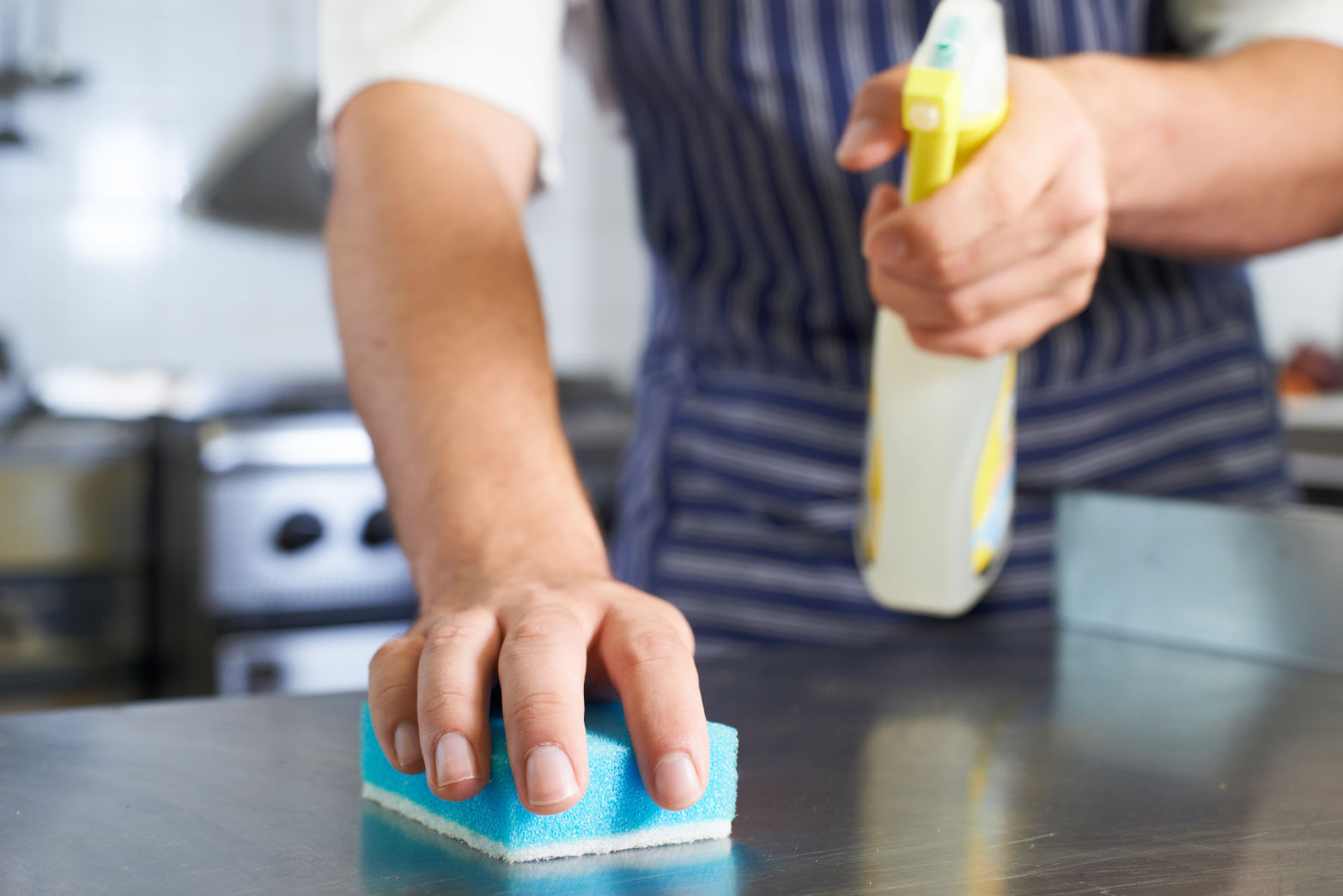
It is estimated that about 3,000 people die of issues caused by foodborne illnesses every year, an issue that is fully preventable, especially in the food service industry.
Thanks to copious, detailed regulations and inspections and ratings that are published to the public, restaurants in the U.S. are very rarely the cause of foodborne illnesses. However, even a single mistake can make patrons extremely sick and potentially put them in the hospital or worse.
Although most people who come into contact with a pathogen in food may experience little more than flu-like symptoms, certain populations may be more at risk of serious adverse reactions, especially the very young, senior adults, people with weakened immune systems and pregnant women.
Here’s how to ensure that foodborne illnesses are prevented in your food service establishment.
What Is a Foodborne Illness?
When someone eats food that has been left out for too long, is spoiled or otherwise contains pathogens, they can become sick. In most cases, this will look like the flu, characterized by symptoms like vomiting, diarrhea, fever and nausea.
People who do not have a robust immune system to fend off these pathogens and flush them from their system may develop more serious issues. Their organs may shut down because of the pathogens or illness-related issues like dehydration.
How Does a Pathogen Get in or on Food?
In some cases, bacteria that cause foodborne illness may be on the food when it is purchased or delivered to the restaurant. Raw meat, specifically, may carry microorganisms that can be harmful to humans. The same is true for fresh produce if it has come into contact with water or another pathogen-carrying surface.
In general, bacteria and microorganisms are commonly found on raw and uncooked food, but they are not harmful to humans. The ones that are harmful may be neutralized when they are cooked at high enough temperatures.
In other cases, a pathogen can be introduced to food in the restaurant’s storage or preparation process. For example, the temperature in the freezer or refrigerator may not be cold enough to keep cold foods cold, or the temperature of hot food may drop below safe levels.
It may be that a prep cook used the same knife to cut raw meat that they used to cut raw produce, unintentionally transferring pathogens from the meat to the produce. Similarly, food that is chopped or prepped on a poorly cleaned surface that has bacteria from raw meat or old food can make someone sick.
Preventing Foodborne Illnesses in the Restaurant: Food Temperatures
Regarding foodborne illness prevention, the most important thing to remember in a restaurant kitchen is to keep cold foods cold and hot foods hot. When food is in the range of 40 degrees Fahrenheit to 140 degrees Fahrenheit, it is in the “danger zone.”
Similarly, when cooking food, especially any dish that contains meat, it is important to cook it until it reaches a specific internal temperature indicative of completion. For most meats, this is 160 degrees. For chicken, the recommended internal temperature is 165 degrees. Once it reaches that temperature internally, it should be kept at or above 140 degrees when served.
Know Which Foods Are at Risk To Prevent Foodborne Illness
Because it is not just raw meat that is at risk of developing pathogens harmful to humans, it is important to know which foods are at risk and to recognize indications that they may be contaminated. Here are a few instances to consider:
Foods that are vacuum-packed or canned improperly can host Clostridium botulinum, so look for popped indentations in jars and discoloration or an odd smell in canned foods.
Unpasteurized dairy products and shellfish may contain Campylobacter jejune. It’s best to avoid unpasteurized foods in a restaurant. Check shellfish before cooking to make sure it’s fresh, and then heat it to the proper temperature before serving.
Food that has been exposed to contaminated water, including water from a lake or pool, can contain Cryptosporidium. It’s important to wash hands and surfaces frequently if the restaurant is on or near a swimming pool or lake.
Ready-to-eat foods, from hot dogs to macaroni salad, can carry bacteria because they may carry Listeria monocytogenes. They must be heated to a high temperature to be safe for consumption.
E. coli may be found in uncooked beef, water or raw fruits and vegetables, and it can also be passed from person to person. It’s especially important to wash hands frequently while in the kitchen and keep preparation surfaces for different types of food separate.
Best Practices for Preventing Foodborne Illnesses in Restaurants
Not only do regulation agencies like the FDA require restaurants to maintain certain standards of conduct, cleanliness and food storage in the restaurant, but they also require restaurants to post their ratings in a highly visible place so customers know that they are (or are not) patronizing an establishment that prioritizes their health.
If nothing else, this is another incentive to keep things clean and maintain best practices. Below are a few guidelines that will help you ensure your kitchen is safe and healthy:
Safe preparation and food handling procedures: Here are a few recommended practices to help keep stations safe and sanitary:
Carefully check food when it comes into the restaurant.
Maintain a separate station that is only for raw meat.
Make sure to use clean utensils when prepping and preparing different foods.
Use a new cleaning cloth every time the counters are wiped down.
Use disinfectants that are effective in killing food-related bacteria.
Proper food storage: Keeping thermometers in freezers and refrigerators and checking them often can help ensure that temperatures stay where they should. Similarly, when keeping food warm in a warming tray, it’s important to change the dishes periodically because the food can cool and become unsafe.
Trashing food that has been out too long or seems suspicious: If food smells off, looks strange, or has an odd consistency or texture, it’s not worth the risk to serve it. Instead, dispose of it safely, so it doesn’t invite insects or rodents into the establishment.
Immediate mess cleanup: If juice from meat packs or sauces spill, if any food is dropped on the floor or falls off a plate and onto the prep counter or if there is any mess at all that happens in the process of food preparation, it is important to clean it up immediately.
Regular cleaning: Having a schedule for cleaning counters, prep areas, knives and other cooking utensils at the end of every shift will help ensure that no food is left out. If it is left out, pathogens can grow on it that will then be passed on to customers.
Deep cleaning: Periodically, certain cleaning tasks should be undertaken to maintain a safe and clean environment. For example, refrigerators and freezers need to be cleaned out and wiped down with disinfectant, pantries and shelves need to be cleaned, old or out-of-date food needs to be tossed and walk-ins will need to be cleaned thoroughly.
Intensive training: None of these practices will be implemented if employees are not trained when they are hired. Follow-up training sessions are needed to show employees how to use different cleaning supplies and to ensure that standards are maintained.
Note: There are also standards of sanitation in place for restrooms in restaurants — not just to keep customers safe but also to ensure that employees who handle food are able to clean appropriately after using the facilities.
Let Alsco Help You Fight Foodborne Illnesses
One of the best ways to support employees in the ongoing battle to keep the kitchen safe and clean is to ensure that they always have the cleaning supplies they need to do the job.
At Alsco, we can make sure that your cleaning supplies are always topped off, that you have all the right cleaning towels (color-coded, if you like) and that you have gloves and aprons to keep everyone in the kitchen safe and your customers satisfied and healthy.
In addition to keeping all cleaning supplies stocked, we provide a number of different services for restaurants without having to find space to store bulk backups. We can also supply tablecloths and linen napkins — washing them, letting go of those that are stained or ripped and replacing them with fresh ones at the same time.
Additionally, to keep the kitchen clean, we can keep your kitchen staff in clean, freshly pressed uniforms and aprons so that they always have sanitary uniforms with no food residue. Contact Alsco now to learn more about the available options.
References
"Danger Zone" (40 °F - 140 °F). U.S. Department of Agriculture, June 2017.
“Foodborne Illness and Disease.” U.S. Department of Agriculture, Oct. 2020.
“Illnesses and Pathogens.” U.S. Department of Agriculture, Nov. 2020.
“Preventing Food-Borne Illness in Food Service Establishments: Broadening the Framework for Intervention and Research on Safe Food Handling Behaviors.” International Journal of Environmental Health Research, Feb. 2007.
“Restrooms and Sanitation Requirements.” United States Department of Labor.
“Scores on Doors: Restaurant Hygiene Ratings and Public Health Policy.” Journal of Public Health Policy, Dec. 2019.
